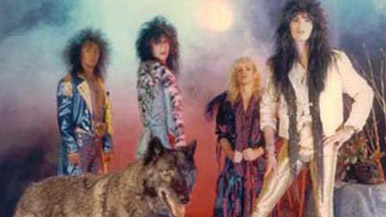Chapter Two
The Decline of Western Civilization Part II: The Metal Years
By Brett Ballard-Beach
June 21, 2012
Recommended additional reading: Our Band Could Be Your Life: Scenes from the American Indie Underground 1981-1991 by Michael Azerrad; Fargo Rock City by Chuck Klosterman
Recommended additional viewing: Urgh! A Music War (1981) directed by Derek Burbidge; Ladies and Gentlemen, the Fabulous Stains (1982) directed by Lou Adler
Although I didn’t intend it, my timing in discussing this week’s film has proved to be fortuitous. Adam Shankman, director of Rock of Ages, revealed in a recent interview that part of his prep work in doing historical research for the era of the film (late ‘80s Sunset Strip in Los Angeles), consisted of watching Penelope Spheeris’ 1988 documentary The Decline of Western Civilization Part II: The Metal Years. He even borrowed from Spheeris’ interview with Kiss’ Paul Stanley for visual inspiration in the film’s introduction to rocker Stacee Jaxx, meant to be a fictional embodiment of the archetypal glam/hair/highly theatrical metal outfits that ruled the Billboard charts from approximately 1983 (success of Def Leppard’s “Pyromania”) to 1990-91(commercial arrival of grunge via Mother Love Bone, Alice in Chains, Mudhoney, Nirvana, et al)
The latter half of that time span - roughly my junior high through my early high school years - is about when I started listening to top 40 radio on a daily/nightly basis, tracking two separate top 40 countdowns weekly and transcribing them by hand. Poison, Faster Pussycat, L.A. Guns, Guns N’ Roses and the commercial revival of Aerosmith (led by the freshly detoxed Toxic Twins Steven Tyler and Joe Perry) were staples of the airwaves. If you were to have been listening in on my daily 45-minute bus ride from Sisters to Redmond during the fall of ’89, you probably would have heard me belting out “Love in an Elevator,” in part because I often sang aloud to the radio, and also because there was a senior I had a crush on, and that was one of her favorite songs at the time.
I mention that personal aside for two reasons. Firstly, by way of explaining that there is very little nostalgic appeal for me of the songs of that ilk. Not because I no longer like them, or because they remind me of a “once upon a time about a girl” but because I have been listening to them for 25 years: on the radio, on CDs, on greatest hit compilations, at ‘80s dance nights or parties, at karaoke, or simply singing them out loud to myself. They are in my bloodstream and omnipresent. There is no ”then” they still come from to return to.
Secondly, I find the idea of Rock of Ages to be almost as weird as the reality of Spheeris’ documentary. Continuing with my “out of time” experience described above, viewing the film for the first time today (on a DVD-R that is simply a copy transfer of the out-of-print video) is like catching up with a time capsule that the city fathers decided didn’t need to be buried. (Perhaps the strangest thought to pop in my head is that a good chunk of the artists profiled as current successes in the film have starred on some type of reality show in the last decade.) After seeing her work, I imagined that someone involved with Rock of Ages would almost out of necessity need to view The Metal Years, if they were intent on capturing a particular level of tamed PG-13 appropriate debauchery - somewhere, say, to the right of Glee but far, far to the left of Fear and Loathing in Las Vegas. (An amusing aside: Spheeris supposedly turned down the chance to follow up The Decline of Western Civilization with directing This is Spinal Tap, because she didn’t see how anyone could parody or satirize heavy metal music.)
Continued:
1
2
3
4




